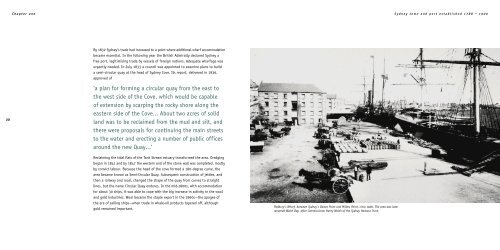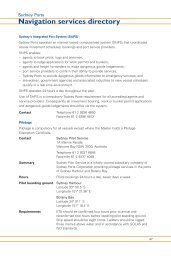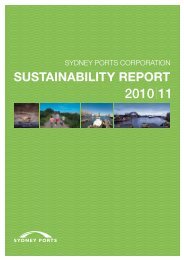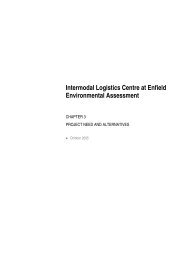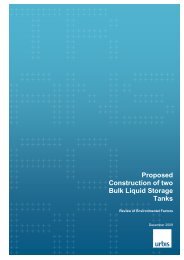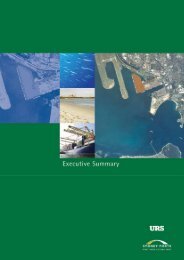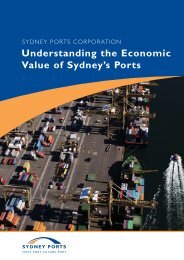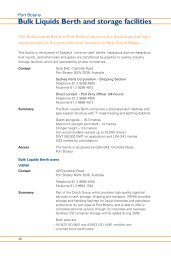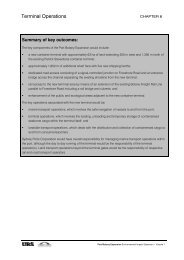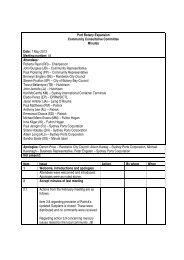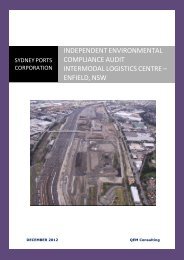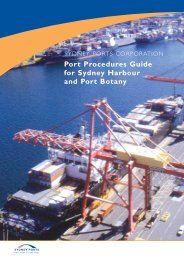Chapter 1..... - Sydney Ports
Chapter 1..... - Sydney Ports
Chapter 1..... - Sydney Ports
You also want an ePaper? Increase the reach of your titles
YUMPU automatically turns print PDFs into web optimized ePapers that Google loves.
<strong>Chapter</strong> one<br />
<strong>Sydney</strong> town and port established 1788 – 1900<br />
20<br />
By 1832 <strong>Sydney</strong>’s trade had increased to a point where additional wharf accommodation<br />
became essential. In the following year the British Admiralty declared <strong>Sydney</strong> a<br />
free port, legitimising trade by vessels of foreign nations. Adequate wharfage was<br />
urgently needed. In July 1833 a council was appointed to examine plans to build<br />
a semi-circular quay at the head of <strong>Sydney</strong> Cove. Its report, delivered in 1836,<br />
approved of<br />
‘a plan for forming a circular quay from the east to<br />
the west side of the Cove, which would be capable<br />
of extension by scarping the rocky shore along the<br />
eastern side of the Cove… About two acres of solid<br />
land was to be reclaimed from the mud and silt, and<br />
there were proposals for continuing the main streets<br />
to the water and erecting a number of public offices<br />
around the new Quay…‘<br />
21<br />
Reclaiming the tidal flats of the Tank Stream estuary transformed the area. Dredging<br />
began in 1841 and by 1847 the western end of the stone wall was completed, mostly<br />
by convict labour. Because the head of the cove formed a 180-degree curve, the<br />
area became known as Semi-Circular Quay. Subsequent construction of jetties, and<br />
then a railway and road, changed the shape of the quay from curves to straight<br />
lines, but the name Circular Quay endures. In the mid-1800s, with accommodation<br />
for about 30 ships, it was able to cope with the big increase in activity in the wool<br />
and gold industries. Wool became the staple export in the 1860s—the apogee of<br />
the era of sailing ships—when trade in whale-oil products tapered off, although<br />
gold remained important.<br />
Padbury’s Wharf, between <strong>Sydney</strong>’s Dawes Point and Millers Point, circa 1900. The area was later<br />
renamed Walsh Bay, after Commissioner Henry Walsh of the <strong>Sydney</strong> Harbour Trust.


